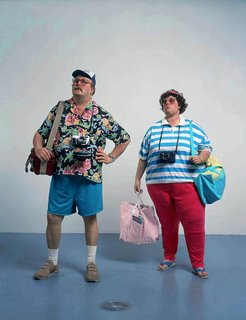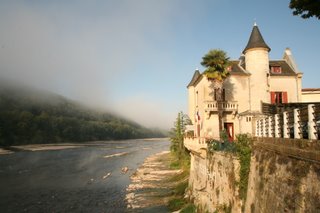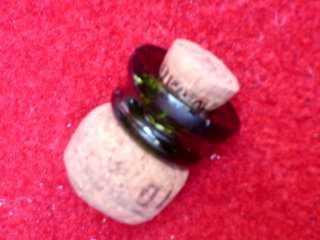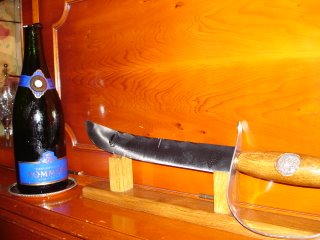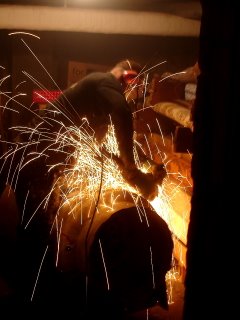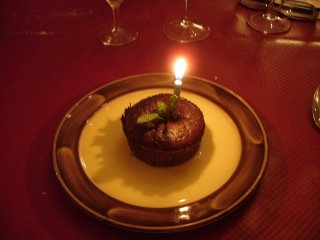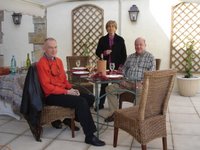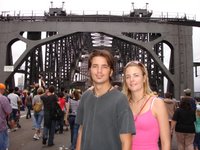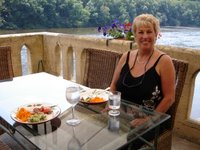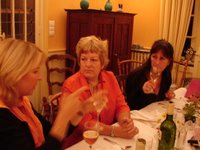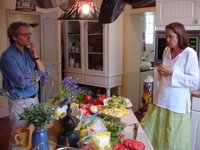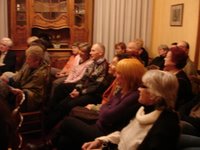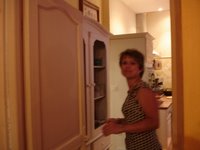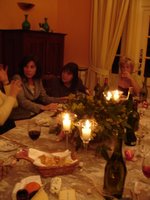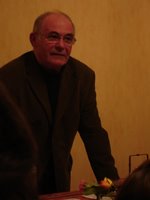Several friends have asked me what makes Fes such a special place. My answer to them is usually profuse and filled with colourful adjectives, and very much the answer I gave to the news editor who interviewed me on National Radio Maroc during my visit there last week: The old medina is the ultimate in colour, culture, hospitality, warmth, excellent products at excellent bargains, -- and paradoxes! A medieval city where, to name but one example, the exact same arts and crafts are still practised in the exact same way as they were 950 years ago, but where the entire walled medina has access to satellite wireless internet.
And so it should not have been a surprise to find that whereas one can still go to a hammam which was built 500-600 years ago and enjoy the pleasures of the three levels of steam and hot spring water, the conviviality of an afternoon with dozens of other women of all ages who are all there for a good cleanse, rub down - and gossip, you can also go to a modern hammam where the latest state of the art technology and equipment is available for beauty and health treatments that most western countries have not even heard about.
The following is an article I was commissioned to write by the world renowned blog, "The View from Fez" on the latest and newest wellness centre - or modern hammam which opened only three weeks ago in Fez:
As a seasoned traveller who has long since discovered that Anywhere-on-5$-a-Day may sound cool, but is not necessarily comfortable, I am always happy to share my secret for surviving gruelling 36 hours (sitting in the back end of the plane) flights accompanied with 36 hours (feeling like the back end of the plane) time changes: The answer is a good sauna or a steam bath followed by a serious massage.
Over the years of travelling around the world, I have visited the best spas, hot springs and well-being centres, I have floated in the Blue lagoon in Iceland, wallowed in the mud pools in Fiji, Rotorua and Mauritania, been pummelled in Sweden and pampered in Pangkor Laut, walked on in Ghana and prodded and pounded in Mexico. My favourite pastime in Japan is bathing and my best memory of St Petersburg is a massage.
Ah! And then I was given a birthday gift of a morning of pure pleasure and indulgence at the NausiKaa Wellness Centre on Avenue Bahnini – and all of a sudden my list of superlatives seemed too short!
From the moment I was dropped off in front of the imposingly modern building with beautiful water ponds and gardens and modern glass and stone façade, and walked into the black wood and grey marble entrance, I was greeted with warm smiles and a friendly welcome. Within minutes the receptionists had ascertained what my needs were and had explained what was on offer. Although I had often visited traditional Moroccan hammams, I had not come prepared with the usual towel, shampoo and brush, but this posed no problem at all and I was whisked off to the change rooms where I was issued with the fluffiest thickest towelling gown, comfortable plastic slip on sandals, shampoo and brush and scrubbing glove. After stowing my clothes in a lock up locker, I was handed over to Ouafa, a lovely young woman who accompanied me down stairs to the ladies’ section of the hammam.
It is stunningly beautiful. It was like walking down into the depths of the ocean. All the shades of blue and green mosaics create a sense of coolness and serenity, whilst the pale grey of the solid marble slab massage beds, hair wash basins and stools look sumptuous and luxurious.
After Ouafa had rubbed me down with a beautiful home made --??---(soap), my first stop was in the steam room – a circular room with comfortable seats around the perimeter and steam so hot that it satisfied even my extreme tastes. A perfect and thoughtful touch in the steam room were the taps with fresh cool water, cleverly placed behind the seats for when the perspiration make vision difficult. The steam room was so good that I did not want to leave, but curiosity got the better of me, and the moment I stepped out of the room, Ouafa was there to lead me to the marble bed where I was made to lie down, my head comfortable on a soft triangular cushion. And then the pleasure started. With the rough scrubbing glove Ouafa gave me a thorough ‘gommage’ – a scrubbing of the entire body to get rid of every bit of dead skin, leaving me glowing and tingling and feeling completely rejuvenated. I was then washed down with warm water from a hand held shower attached to the base of the marble bed, after which I stepped into the large, deep and very hot Jacuzzi.
Just when I was thinking that nothing could feel more heavenly, the next stage of the treatment started. This time Ouafa started the ‘savonnage’ -- rubbing a beautiful creamy soap all over me, massaging my skin with the soft soap from the tips of my toes to the top of my head until every bit of me felt soft and supple and every muscle in my body felt relaxed – a deliciously gorgeous sensation. When I was finally instructed to go stand under the shower to wash down all the soap and shampoo, I felt so mellow that I just smiled and complied.
I could have stopped there and been totally satisfied, but there was more to come!
Ouafa wrapped me in the towelling gown and took me upstairs to the treatment rooms. Here, on the top floor, the décor changes from the mystical aqua’s to the more sleek black and greys with beautifully carved ebony wood inlays, smoked glass, clean modern lines and crisp white cotton sheets on the massage beds. In the massage rooms scented candles fill the air with a subtle fragrance and soft lighting and gentle music add to the atmosphere of opulence and luxury.
Ikram, another lovely young woman, made me comfortable and started the massage. Over the next hour every muscle, every nerve ending, every square inch of my body was attended to until I felt as if I was floating above the bed. It was without a doubt one of the best massages I have ever had. And to make the experience even more perfect, Ikram suggested, when she had finished, that I may want to stay for a while before getting up. To be able to continue lying and luxuriating in the wonderfully relaxed state after a massage is such a bonus! Wonderful!
Finally I had a shower – in a large cubicle in the massage room -- wrapped myself in the gown again and went back downstairs to retrieve my clothes and get dressed. I was reluctant to leave, but, as I floated out of the NausiKaa Wellness Centre, feeling like a million dollars, I knew that I would be back – the very first chance I get!
And at the exceptionally reasonable prices, I even venture to say that it is worth a special price ticket on Atlas Blue (Marseilles to Fes) or Ryan Air (Bordeaux or Luton to Casa Blanca) just for a day at the spa!
Nausi Kaa was the beautiful daughter of King Alkinoos of the Phaiakians, who was sent by Athena to go meet Odysseus when he landed in Scheria or Phaiacia. She anointed him with fragrant oils and revived him after his difficult voyage.
The NausiKaa Wellness Centre can be found on Avenue Bahnini – Route Ain Smen, in Fes. There is a separate hammam for men, a hair and make up salon, many different kinds of hydro-, seaweed and other state of the art therapies provided by staff trained in France, as well as a fully equipped modern gym with personal trainers.
e-mail: info@nausikaa-spa.com
Website
Click on Link:
Chateau Lalinde : The perfect venue for your event


